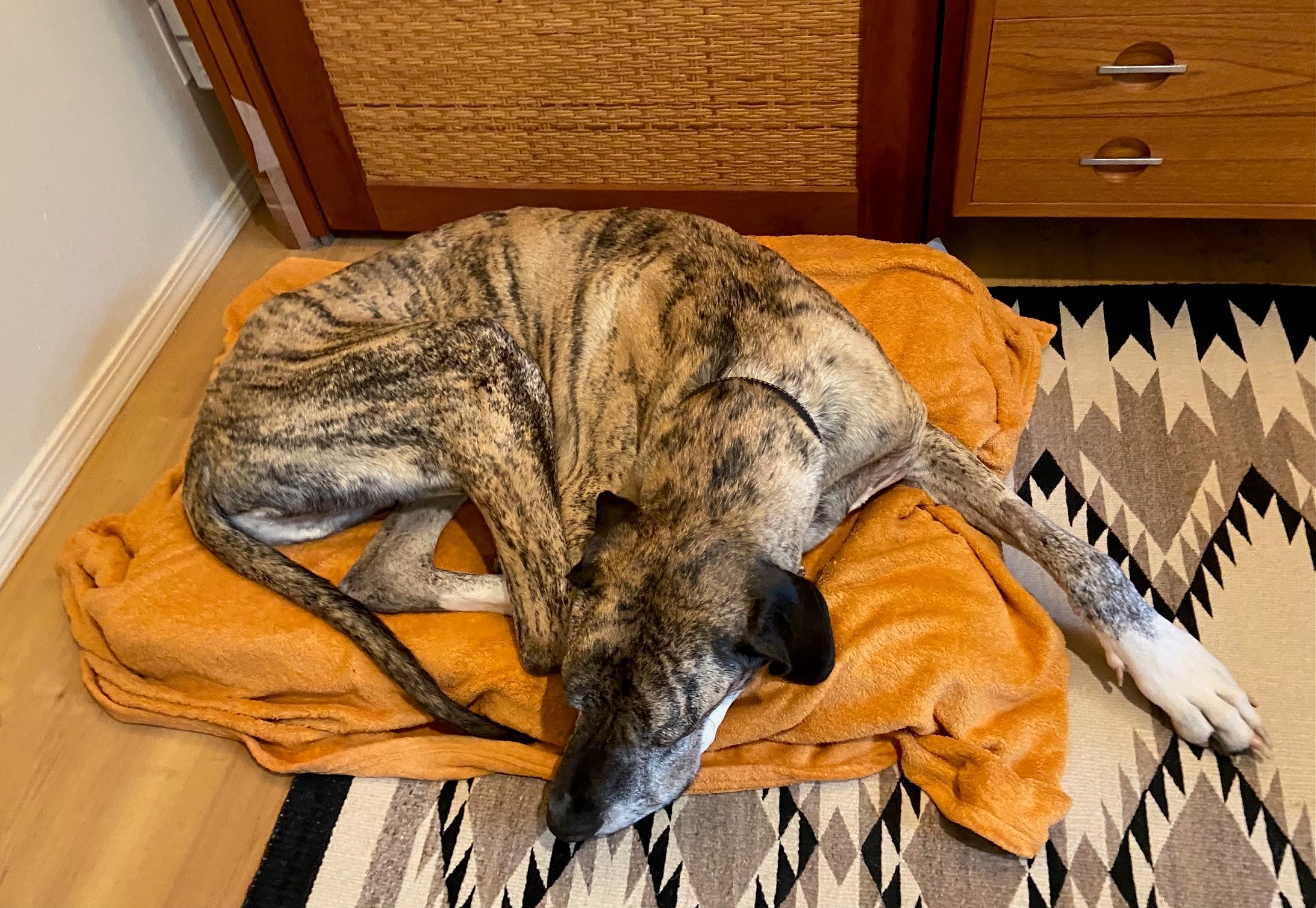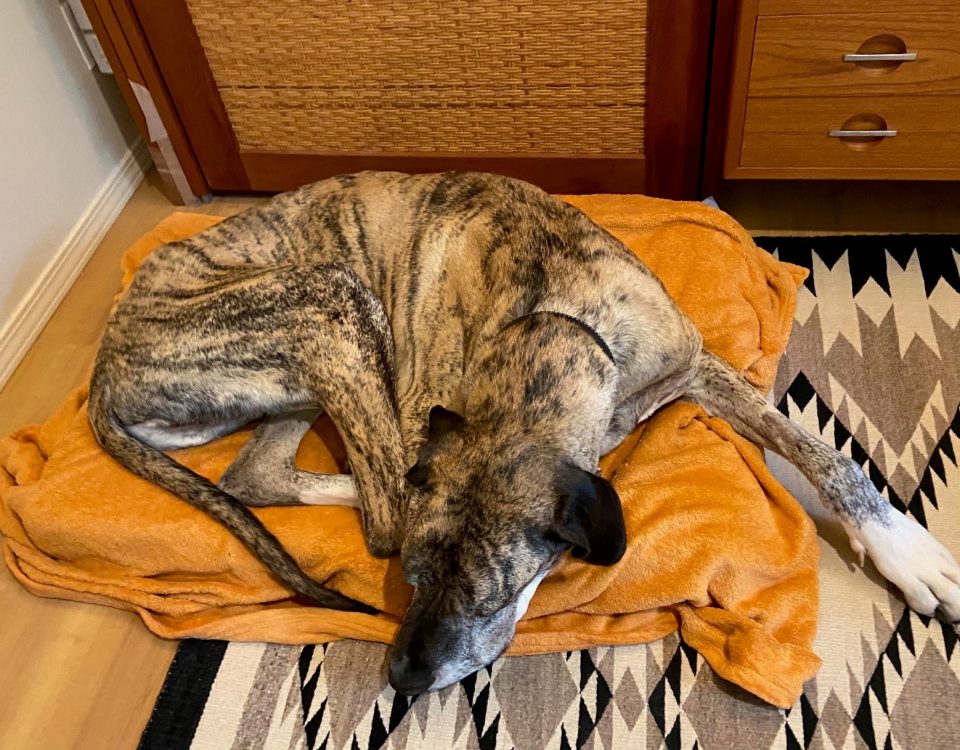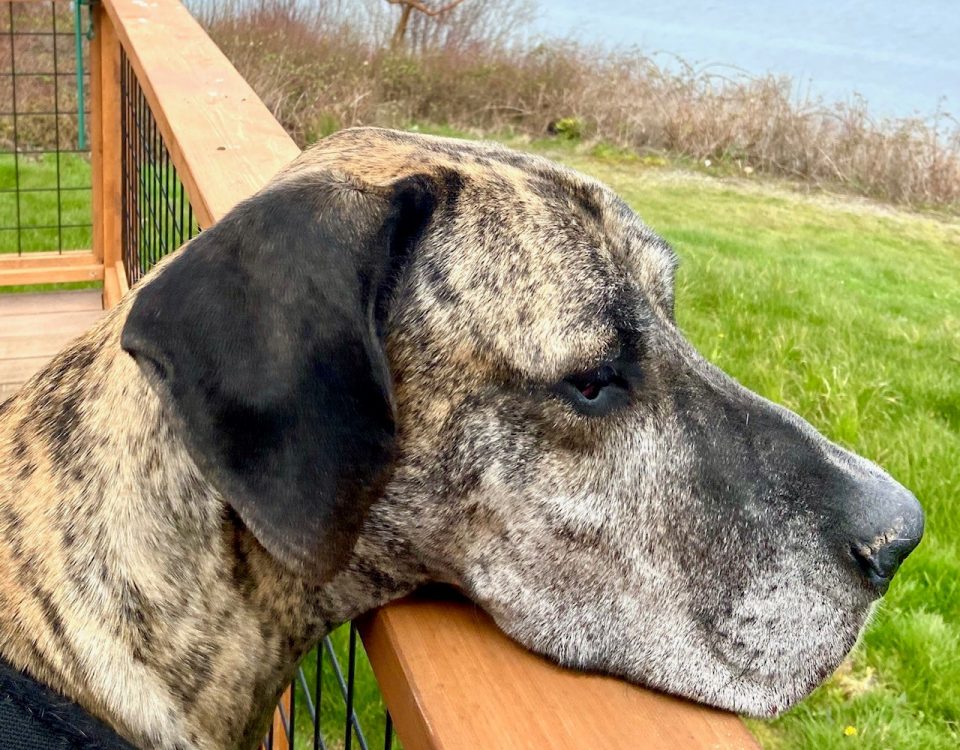
Today’s Lesson from the Dog *
May 3, 2021
Words
I remember stopping at a Hallmark store on the way home from yoga class. This was years ago, in my early days of living with Parkinson’s. Still, I remember standing in front of a rack of birthday cards trying to choose one. It was for a friend who was worse off than I was. She was dying of cancer. It’s not easy finding a card that can capture the beauty and irony of celebrating a birthday on one’s death bed. Finally, I drove home and made her a card. On the front, I wrote Life is so and, on the inside, every day.
She’d always liked that saying because the words could carry a different meaning depending on the attitude or tone of voice. By the end of her treatments, the adage—spoken with the emphasis on Life and elongating ev-er-y day— could have pointed to how tired she’d become. Or, if she said the whole phrase in a level tone, it could indicate an observation or statement of fact. What is, is, in other words. Mostly, I remember how she cheered on life and was so tickled by it being there every day! She really did speak in bold letters.
Affirmations
Several upbeat quotations have caught my attention over these past twenty years living with Parkinson’s disease. I repeat some as affirmations while others are my go-to quotes to read in yoga classes. Here are a few:
Parkinson’s is a word not a sentence. (A favorite ever since diagnosis)
Until there’s a cure, there’s a community. (Thank you, Cindy)
I’m battling Parkinson’s. What’s your superpower? (A new favorite)
Words, I believe, can be powerful. In a study on the effect of positive affirmations on areas of the brain, the results were significant.1 What we tell ourselves does impact how we feel and think and act. By replacing the ongoing chatter in my head with positivity, I can leap off the gerbil wheel of PD worries. Since words can change our minds, I’m placing them right next to exercise in my superpower box of managing my PD.
Exercise and Mindfulness
More and more studies affirm that exercise is essential to navigating Parkinson’s. We’ve known this for years. It was the main tool I reached for when I was first diagnosed two decades ago. It’s still my go-to means of traversing the obstacles of PD.
In addition to movement, science has also shown that ‘a change of mind’ can help relieve symptoms: mindfulness.2 Mindfulness, in other words, being aware of the moment, turning off the mind’s editor, judge and worrier, noticing the flowers and shapes of clouds. Ev-er-y day.
A current study asks what happens if mindfulness is combined with exercise. The researchers are looking to see if adding the two has a significant effect on managing symptoms such as rigidity and balance.3 The results haven’t been published yet but wouldn’t be surprised if mindfulness with movement wins out. Because mindful movement is the very definition of yoga. Also referred to as a meditation in motion, yoga has already proved its positive impact.
Yoga can help relieve rigidity and constipation, improve balance and flexibility and ease muscle pain. The benefits aren’t only physical, yoga can have a positive impact on mood and apathy.
“Results showed the benefits of yoga on improving motor function, balance,
functional mobility, reducing anxiety and depression, and increasing Qol (Quality of Life).”4
Yoga for Parkinson’s
For nearly two decades, yoga practice has provided relief not only from my physical symptoms, but it’s especially helpful mentally and emotionally, too. On the days when the ugly reality of PD gets the upper hand and making a cup of tea seems like an overwhelming task, I return to yoga. The meditation and the motion. Because yoga is not about the pose or how many poses or perfecting a pose. Practicing yoga—moving and flowing while focusing on the breath—is about training ourselves to pay attention to what we can control (our breath) and to notice what’s going in our bodies. And, like breathing and movement, it’s every day.
Yoga for Parkinson’s is a practice that is designed specifically for people with Parkinson’s. There are specific flows and breath work designed to target and relieve some motor and non-motor symptoms of PD. It includes ways to practice yoga in ‘off’ times or when dyskinesia sets in. It helps keep us present, which, at times, means fighting the fight. Which reminds me, I and have a new favorite saying: (thank you, Peter):
Parkinson’s, I know you’ll win this battle, but not today.
Today, I’m doing yoga--it’s so (helpful) every day.
References
1) Cascio, C. N., O’Donnell, M. B., et al. Self-affirmation activates brain systems associated with self-related processing and reward and is reinforced by future orientation. Social Cognitive and Affective Neuroscience. April 11 (2016).
2) Kwok, J.Y.Y., Choi, E.P.H., Wong, J.Y.H. et al. A randomized clinical trial of mindfulness meditation versus exercise in Parkinson’s disease during social unrest. npj Parkinsons Dis. 9, 7 (2023).
3) Kwok, J. Y. Y., Kwan. J. C. Y. et al. Effects of mindfulness yoga vs stretching and resistance training exercises on anxiety and depression for people with Parkinson disease: a randomized clinical trial. BMC Nov. 2 (2017).
4) Bana, U., You, X, et al. The effects of yoga on patients with Parkinson’s disease: a meta-analysis of randomized controlled trials. Behavioral Neurology
Jul. 5 (2021).



